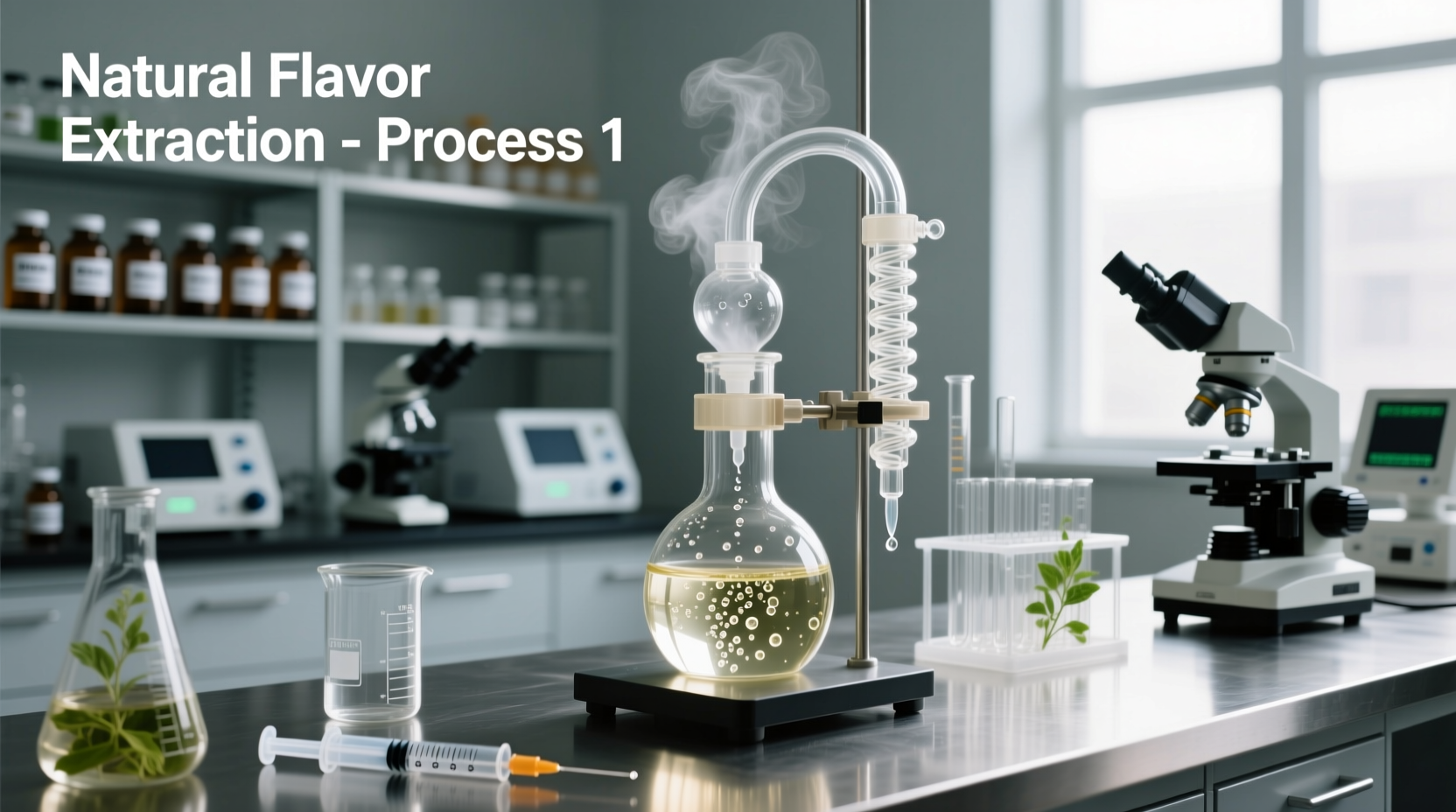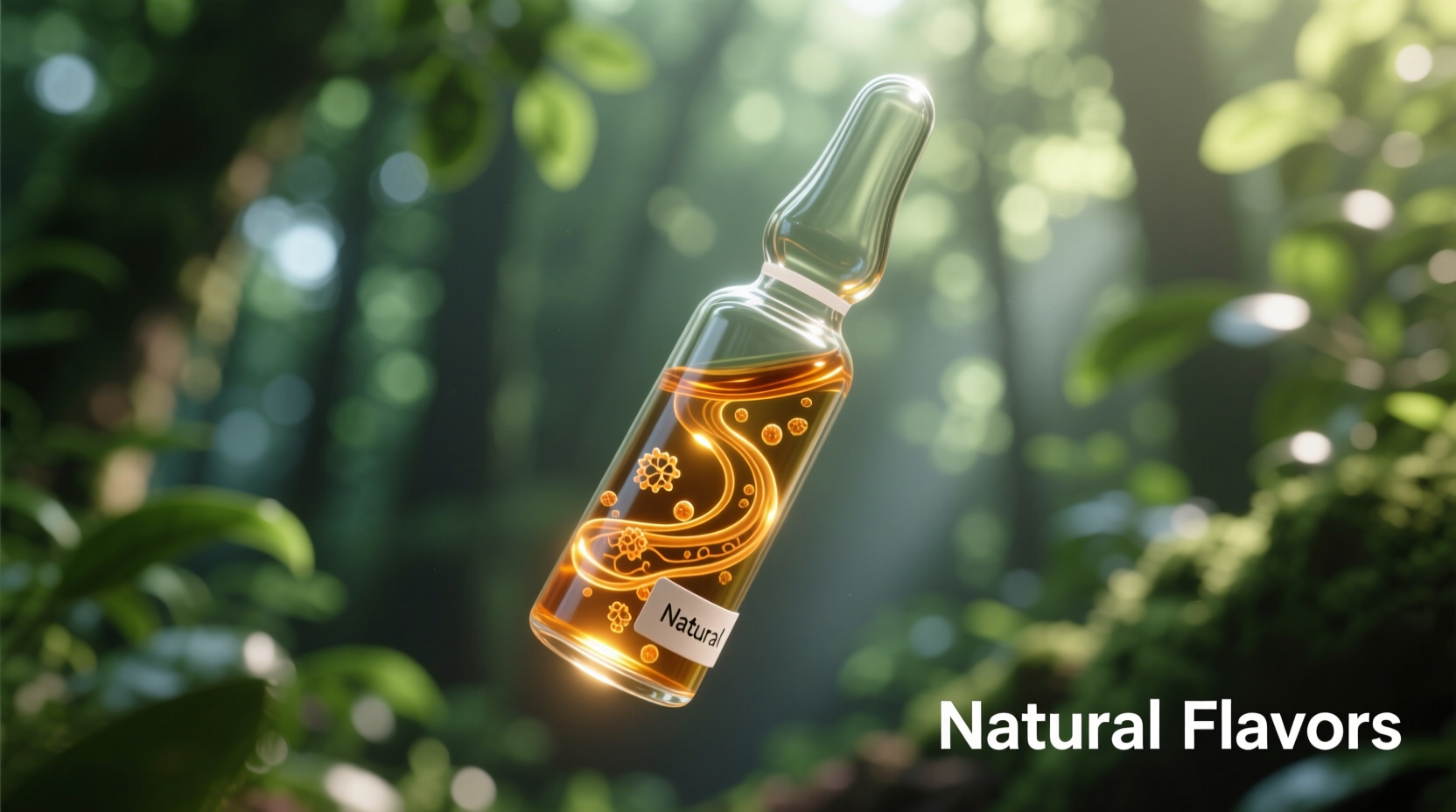Ever wondered what's really hiding behind the term "natural flavors" on your food labels? You're not alone. This seemingly simple phrase has sparked confusion and concern among health-conscious consumers trying to make informed choices. Let's cut through the marketing haze with science-backed facts about what natural flavors actually contain and how they impact your food.
Demystifying Natural Flavors: Beyond the Marketing Hype
When you see "natural flavors" listed on a food label, it's easy to imagine fresh fruits, herbs, or spices being gently extracted and added to your product. The reality, however, is more complex. According to the U.S. Food and Drug Administration (FDA) regulations, natural flavors are defined as:
"The essential oil, oleoresin, essence or extractive, protein hydrolysate, distillate, or any product of roasting, heating or enzymolysis, which contains the flavoring constituents derived from a spice, fruit or fruit juice, vegetable or vegetable juice, edible yeast, herb, bark, bud, root, leaf or similar plant material, meat, seafood, poultry, eggs, dairy products, or fermentation products thereof, whose significant function in food is flavoring rather than nutritional."
This technical definition reveals that "natural" refers only to the original source material, not the processing methods or additional ingredients used in creating the final flavor compound.
What's Inside the Bottle: The Composition of Natural Flavors
Natural flavors aren't single-ingredient extracts but complex mixtures designed to deliver specific taste profiles. A typical natural flavor contains:
- Primary flavor compounds - extracted from plant or animal sources
- Carrier substances - like vegetable glycerin or propylene glycol to stabilize the mixture
- Solvents - used during extraction processes
- Preservatives - to extend shelf life
- Modifiers - to enhance or balance the flavor profile
The exact formula remains a closely guarded trade secret. Food manufacturers aren't required to disclose the specific components beyond identifying them as "natural flavors," which creates transparency challenges for consumers with allergies or dietary restrictions.

Natural vs. Artificial: Understanding the Real Differences
Many consumers assume natural flavors are inherently healthier than artificial ones, but the scientific reality is more nuanced. Let's examine the key distinctions:
| Characteristic | Natural Flavors | Artificial Flavors |
|---|---|---|
| Source Material | Plant or animal origin | Synthetic chemical compounds |
| Processing Level | Often highly processed | Synthesized in laboratory |
| Chemical Composition | May be identical to artificial versions | May mimic natural compounds |
| Regulatory Oversight | Same safety standards as artificial | Same safety standards as natural |
| Cost | Generally more expensive | Generally less expensive |
Interestingly, the chemical compounds in natural and artificial flavors can be identical. Vanillin, the primary component of vanilla flavor, can be derived from vanilla beans (natural) or synthesized from wood pulp or petrochemicals (artificial), yet the molecule itself is the same.
The Flavor Creation Timeline: From Source to Shelf
Creating natural flavors involves sophisticated processes that have evolved significantly over time:
- Pre-20th Century: Simple extraction methods like enfleurage (fat extraction) and maceration were used for flavor creation
- Early 1900s: Distillation and expression techniques became more refined
- Mid-20th Century: Introduction of solvent extraction and concentration methods
- Late 20th Century: Development of enzymatic and microbiological processing techniques
- 21st Century: Advanced chromatography for precise flavor component isolation and combination
Today's natural flavor production typically follows this process:
- Source material selection (fruits, herbs, spices, or other natural sources)
- Extraction using methods like cold pressing, distillation, or solvent extraction
- Concentration and purification of desired flavor compounds
- Combination with carriers, solvents, and other supporting ingredients
- Rigorous quality control and standardization
- Final integration into food products at precise concentrations
Consumer Considerations: When Natural Flavors Matter Most
While natural flavors generally pose no health risks for most people, certain situations warrant closer attention:
- Allergen concerns: Natural flavors derived from common allergens (like dairy, soy, or tree nuts) might not be explicitly labeled, potentially causing issues for sensitive individuals
- Vegan and vegetarian diets: Some natural flavors use animal-derived ingredients that aren't disclosed
- Religious dietary restrictions: Certain natural flavors may contain alcohol or animal products that conflict with specific dietary laws
- Organic certification: Natural flavors in organic products must meet additional sourcing and processing requirements
For those with specific dietary needs, contacting manufacturers directly remains the most reliable way to determine exact flavor composition, though many companies maintain these formulas as proprietary information.
Making Informed Choices About Natural Flavors
Understanding natural flavors empowers you to make more informed food choices. Consider these practical strategies:
- Read beyond the flavor listing: Check for additional disclosures about flavor sources in ingredient statements
- Look for certified products: USDA Organic, Non-GMO Project, or vegan-certified products often have stricter flavor ingredient requirements
- Consider whole food alternatives: When possible, choose products that list specific flavor sources (like "vanilla extract" instead of "natural flavors")
- Ask manufacturers directly: Many companies will disclose flavor sources upon request, especially for allergen concerns
- Balance perspective: Remember that natural flavors typically make up less than 1% of most processed foods, so focusing on overall ingredient quality matters more
As consumer demand for transparency grows, some food companies are beginning to disclose more about their flavor ingredients. The Clean Label Project and other initiatives are pushing for greater disclosure in this traditionally opaque area of food manufacturing.
Frequently Asked Questions About Natural Flavors
Are natural flavors healthier than artificial flavors?
Natural and artificial flavors are subject to the same safety regulations and generally pose similar health considerations. The "natural" designation refers only to the original source material, not health benefits. Both types undergo rigorous safety testing, and neither is inherently healthier than the other from a nutritional standpoint.
Can natural flavors contain GMO ingredients?
Yes, natural flavors can contain GMO-derived ingredients unless specifically labeled as non-GMO or organic. The FDA doesn't require GMO disclosure for flavor ingredients, so products containing natural flavors may include components derived from genetically modified corn, soy, or other crops used in processing.
Why don't manufacturers list the specific ingredients in natural flavors?
Food manufacturers consider flavor formulas trade secrets protected by law. The FDA allows companies to group these complex mixtures under the general term "natural flavors" without full ingredient disclosure, similar to how perfume formulas are protected. This practice helps companies maintain competitive advantages in flavor development.
Do natural flavors contain MSG or other additives?
Natural flavors can contain glutamic acid (the component of MSG) when derived from protein-rich sources like tomatoes, cheese, or seaweed. However, if added separately, MSG must be listed on the ingredient label. The flavor industry maintains that naturally occurring glutamic acid in flavors doesn't require separate labeling.
How much natural flavor is typically used in food products?
Natural flavors usually constitute less than 1% of a food product's total ingredients. Despite their small quantity, they significantly impact taste perception. The exact amount varies by product type, with beverages typically containing 0.01-0.1% and solid foods containing 0.1-0.5% natural flavors.











 浙公网安备
33010002000092号
浙公网安备
33010002000092号 浙B2-20120091-4
浙B2-20120091-4